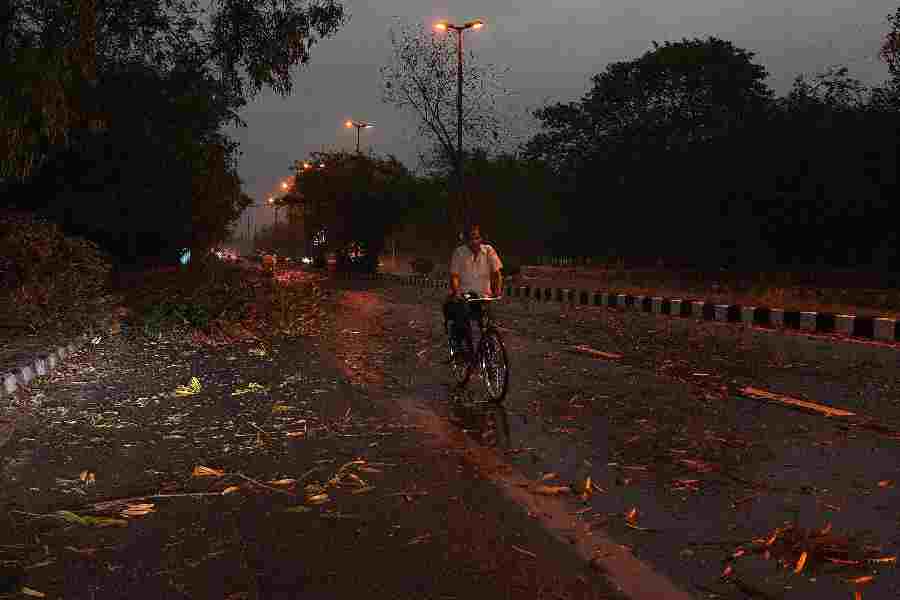 |
On a regular day, Shankar Set’s world revolves around computers. But on certain days, the software professional in him takes a backseat. With his wife Dalia (both of them are in their fifties), he sets out to indulge in his newest hobby ? bird-watching. “It’s something I’ve picked up recently. I love to travel and on these trips I always keep a sharp look out for what’s happening in the natural world around me. This often involves following the trajectory of birds. The hobby grew from this initial curiosity,” he says.
Set is not alone in his pursuit of this hobby. Calcutta is seeing a spurt in the number of enthusiasts who track the flight paths of our feathered friends. “With better books available, more and more people are showing an interest in bird-watching than, let’s say, 10 years back,” says Kushal Mookherjee, secretary of Prakriti Samsad, a nature study organisation. It’s an encouraging development that Sahir M. Latif, managing director of Silent Valley (Wilderness) Tours, has also noticed.
India’s tropical climate makes bird-watching an exciting hobby. To feed the curiosity, Silent Valley is organising a bird-watchers’ camp from January 23 to 26 in the Bhitarkanika tidal area in Orissa. “The aim is to popularise bird-watching with the motto of making common people do uncommon things,” says Latif. The Set family has signed up for it.
So what specialised skills does bird-watching require? “None, practically,” says Mookherjee. “It allows for a lot of flexibility and doesn’t need you to keep aside fixed hours for it. It’s a hobby you can indulge in while standing at your window every morning. You just have to have your eyes and ears open.” That’s one reason why bird-watching is very popular among amateurs. “Once you’re hooked on to it, you are forever on the look out, even when you’re travelling to office in the mornings,” says Latif.
Field trips are a different matter of course, since it requires a certain amount of physical fitness for long hours of walking. A good pair of shoes helps in the wild, as do neutral clothes and torches. A pair of field glasses or binoculars are necessary tools ? usually a 7x35 (7 stands for seven-times magnification and 35 is the diameter of the objective lens) or an 8x40 specimen that is branded, is good enough. But if you want greater magnification ? necessary when you’re tracking birds in the wetlands ? a 10x50 serves the purpose better.
Images taken on a good camera, preferably an SLR (single lens reflex) variety, would help identify birds in reference material in books and on the Internet. A notebook and a pen are also necessary to jot down the characteristics of the birds you spot in the open. But field trips are not just about tramping around the countryside and taking pictures. “If you’re a serious bird-watcher, it’s crucial to do your homework properly ? that means looking up references and identifying the birds you’ve seen,” says Mookherjee who remembers seeing a variety of birds even at Curzon Park and the Victoria Memorial in the heart of Calcutta.
Long field trips can only add to this excitement and winter is just the right time to make a trip. The Silent Valley camp, for instance, will involve members of the Zoological Survey of India as well as noted ornithologists and conservationists. “At the end of each day, we plan to hold discussions where group members can speak about the birds they have seen,” says Latif. Since Bhitarkanika has great bio-diversity, the camp plans to cover the arboreal and wetland birds of the delta as well as the gulls and terns closer to the sea. Prakriti Samsad has just returned from its annual camp at the Buxa tiger reserve. It also conducts day-long field trips in and around Calcutta ? to the Santragachhi Jheel, for instance ? once a month.
Need to know
time: Early mornings, as a greater number of species can be spotted.
season: Year round. Winter for migratory birds, spring and summer for birds, nesting and mating. Monsoons for the breeding of wetland birds.
contact: Silent Valley (Wilderness) Tours, 14/1 Karaya Road, First floor, Calcutta: 700017, Ph: 22802893/7811, e-mail: silent@vsnl.net
Prakriti Samsad: 65 Golf Club Road, Calcutta: 700033, Ph: 24127612, e-mail: kushal_m@vsnl.com










